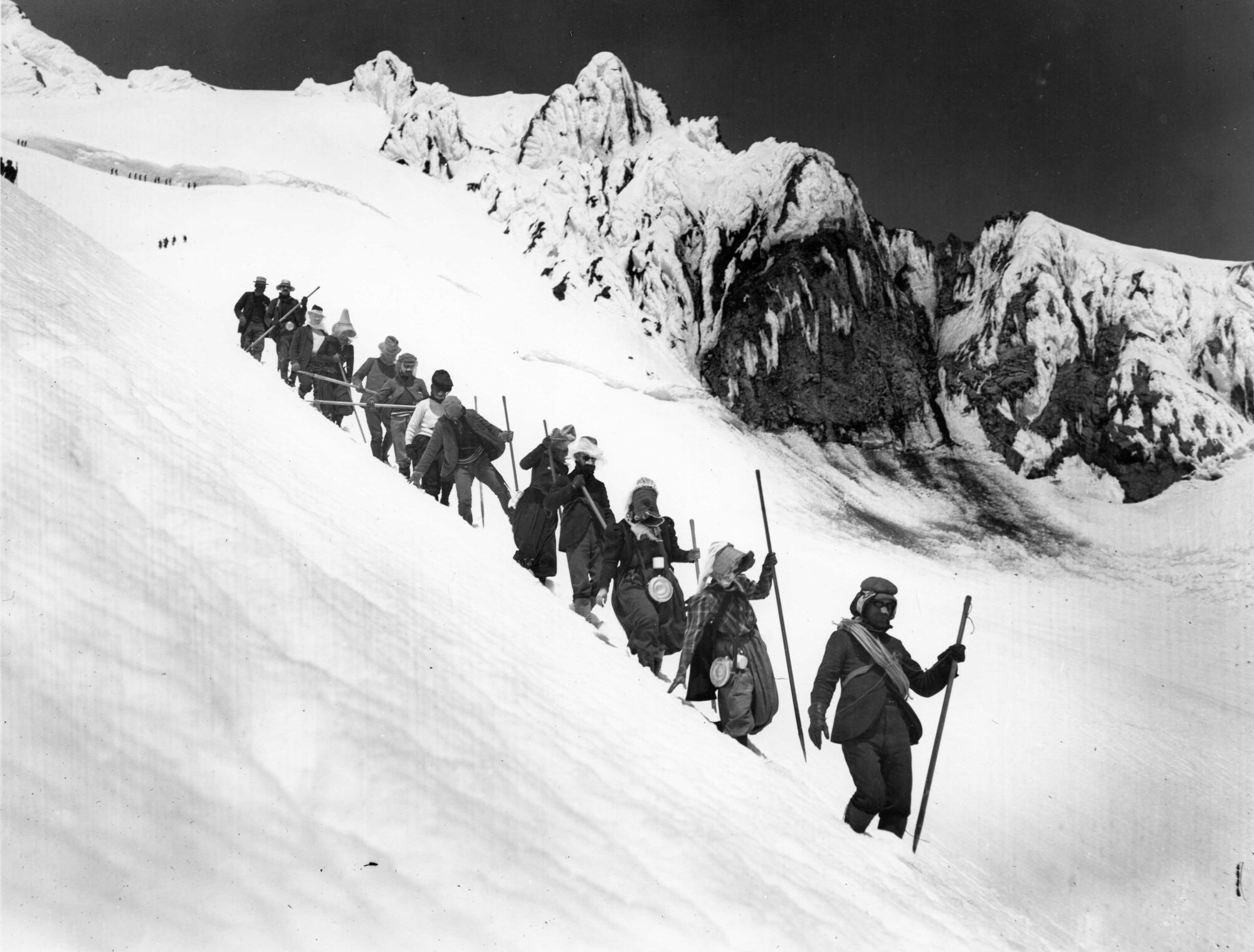Article and photographs by Ali Gray, from the December 2020 Mazama Bulletin

As I write this, the United States and the world are waiting in limbo for the results of the 2020 presidential election. What else am I and my fellow winter recreation enthusiasts waiting for? Snow! Each winter, people across the Pacific Northwest get out in greater and greater numbers to enjoy the wonders of winter backcountry recreation.
In fact, backcountry skiing and snowboarding is currently the fastestgrowing segment of the snow sports industry. At the same time, the numbers of people getting out in other ways—think snowmobiling and snowshoeing—are also increasing in leaps and bounds. This is a trend that has been happening for well over a decade.
But then COVID-19 hit. Thrust into a worldwide pandemic in the middle of the prime spring season, ski resorts across the country shut down. With nowhere else to go, and with the prospect of everyday attractions such as concerts, bars and restaurants, museums, and other social gatherings canceled for the foreseeable future, people turned to nature. Trailheads overflowed with recreationists, and backcountry touring equipment sold in record numbers throughout March and April. This trend continued through the summer, with many areas across the Pacific Northwest and beyond seeing more people on our public lands on weekdays than are normally seen during peak weekends and holidays. Weekend warriors like myself started to seek out trails that are more remote and off the beaten path to avoid the crowds.
What does this mean for winter? Ski resorts have implemented plans to remain open during the pandemic, but the reality is that the number of people riding the lifts this winter will be greatly reduced. Winter hiking, snowshoeing, and snowmobiling will also likely be on the rise as those who took to the trails all summer and fall will want to continue the activity while urban activities remain limited. It’s pretty easy to see that backcountry recreation will see record numbers of people out on the slopes and trails this winter. Although I’m delighted more folks will be experiencing nature in the snow, I’m worried about the consequences of more people with less experience in volatile winter environments. So how can you stay safe?
COVID-19 PRECAUTIONS
First off, a no-brainer. Just because you’re outside doesn’t mean you’re safe from COVID. Social distancing and wearing a mask are still important. Remember that studies have shown that fleece neck gaiters and buffs are less effective than cotton face masks and surgical masks. Also remember, cotton is normally a big no-no in the winter because it’s cold when wet and dries slowly, so you may need to bring a handful of masks on your outing, especially if you’re going to be breathing heavily.



KEEPING YOUR DISTANCE (IT’S NOT JUST FOR COVID)
We’ve all heard about avalanches and the risks they pose. Sliding snow isn’t just dangerous for the person that triggers the avalanche—many slides travel much further down the slope than you’d think, and can easily trap people down below who weren’t involved in the initial triggering event. With more people on the slopes this winter, this will be especially important. Be aware of your surroundings and how busy your trail is, and avoid traveling at the bottom of large slopes or in gullies. If you cross a steep, snowy slope, go one at a time. This way, if an avalanche were to occur, only one person is caught instead of your entire group.
SPEAKING OF DISTANCE …
If you’re like me, you may be traveling to fartherout and more remote places this winter to avoid the crowds. Keep in mind that while the trail may not be a conga-line and there may still be fresh powder, you’re also farther away from help. Carrying an emergency beacon is a really good idea, and also, in addition to the 10 essentials, make sure to carry extra warm clothes, socks, gloves, and maybe even a camp stove and small bivy sack. Remember that even a small injury can become way more difficult to manage when it’s freezing and there is snow on the ground, and that it gets dark quickly and early this time of year.

SPEAKING OF AVALANCHES …
There are going to be more people out this winter, so it’s super important each one of us does what we can to keep each other safe. While many online resources are aimed at skiers and snowboarders, knowledge of avalanches is just as relevant and important for snowshoers, hikers, climbers, and motorized users.
If you haven’t already, attend an avalanche awareness class! These free events are put on by local businesses across the Portland metro area, with many also being offered online this year. Awareness classes last a few hours and will teach you about the types of avalanches, where they occur, and how you can best avoid them. Also, Know Before You Go (kbyg.org), avalanche.org, and Avalanche Canada (avalanche.ca/start-here) are great online resources for avalanche education. The Northwest Avalanche Center (nwac.us) and the Central Oregon Avalanche Center (coavalanche.org) are our go-to places for avalanche information and forecasts in the region.
Want to go further? Take an Avalanche 1, 2, or Rescue course! These indepth classes cover risk management, terrain selection, and rescue techniques, and are imperative for anyone who spends time in the mountains in winter. Classes are filling up faster than normal, so make sure to sign up soon on the AIARE website at avtraining.org.
LEARN MORE
There is so much more to learn about traveling in the backcountry in winter, which won’t all fit here. For more, check out my article covering avalanches, winter weather, and preparing for the unexpected on page 8 of the January 2020 Mazama Bulletin: tinyurl.com/MazJan2020

